In this excerpt from "The mystery of the cathedrals", written in 1922 and published in 1929, Fulcanelli discusses the enigmatic cult of the Black Virgins in France, listing the cathedrals in which for centuries the cult is officiated.
di Fulcanelli
taken from The Mystery of the Cathedrals
originally published on visionary
At one time, the underground chambers of temples they served as abode for statues of Isis, and they became, at the time of the introduction of Christianity into Gaul, those Black virgins that the people, today, surrounds with a very particular veneration. After all, the symbolism between these two representations is the same: both show the famous inscription on their base: Virgini pariturae ("To the Virgin who must give birth"; Ch. Bigarne, Considerations sur le Culle d'Isis chez les Eduens. Beaune, 1862), tells us of several statues of Isis designated by the same word. The scholar Pierre Dujois tells us:
«Already in yours General Bibliography of the Occult, the wise Elias Schadius had pointed out in his book De dictis Germanicis, a similar inscription: Isidi, seu Virgini ex qua filius proditurus est ("To Isis, or to the Virgin from whom the Son will be born"). These icons, therefore, had no Christian meaning at all, which is commonly given to them, at least from an esoteric point of view. Bigarne says that Isis, before the conception, is, according to astronomical theogony, the attribute of that Virgin which several monuments, much older than Christianity, indicate with the name of Virgo paritura, that is, the earth before being fertilized, and which will soon be revived by the rays of the sun. And also the mother of the gods, as a stone of God attests: Matri Deum magnae ideae »
The esoteric sense of our black Virgins cannot be better defined. They depict, in the hermetic symbology, the primitive earth, the one that the artist must choose as the subject of his great work. It is the raw material in the state of mineral, as and when it is extracted from the metalliferous veins, deeply hidden under the rock mass. The texts tell us that it is "a black, heavy, brittle, brittle substance, which has the appearance of a stone and can be crushed into small pieces just like a stone ». It therefore seems normal that the humanized hieroglyph of this mineral has its own characteristic color and that the underground places of the temples are reserved for it as its seat.
Right: Notre-Dame-du-Pilier
In our day, the Black virgins they are not numerous. We will mention a few, which enjoy great fame. There Chartres cathedral from this point of view it is the most favored, in fact it has two: one, called by the expressive name of Notre-Dame-sous-Terre, is placed in the crypt, and is seated on a throne whose base bears the already known inscription: Virgini pariturae; the other is in the church, is called Notre-Dame-du-Pilier, occupies the center of a niche full of ex-votos in the shape of hearts that send rays. Witkowski tells us that the latter is the object of devotion by a large number of pilgrims:
«Once the stone column that supports it was" carved "by the tongues and teeth of its fiery faithful, like the foot of St. Peter, in Rome, or the knee of Hercules, adored by the pagans in Sicily; but to protect it from those too ardent kisses, the column was wrapped, in 1831, with a wooden covering. "
Chartres, with his Underground virgin, is considered the oldest pilgrimage destination. At one time there was only an ancient statuette of Isis "sculpted before Jesus Christ", as some ancient local chronicles tell us. However, the image we possess now only dates from the end of the 1793th century, because that of the goddess Isis had been destroyed, we don't know when, and replaced with a wooden statuette, which held the Child seated on his lap, and which, in his time, it was burned in XNUMX.
Right: Notre-Dame-de-Confession
as to Black virgin of Notre-Dame-du-Puy - whose limbs are not visible - has the shape of a triangle, with the dress that surrounds her neck and spreads without creases up to the feet. The fabric is decorated with vine shoots and ears of wheat - allegories of Eucharistic bread and wine - and lets pass, at the navel level, the head of the Child, crowned as sumptuously as the mother. Notre-Dame-de-Confession, famous Black Virgin of the crypts of Saint-Victor in Marseille, he shows us a beautiful specimen of ancient statuary, soft, large and fat. This figure, full of nobility, holds a scepter in his right hand and his forehead is surrounded by a triple flower crown.

Notre-Dame de Rocamadour, destination of a famous pilgrimage, already frequented in 1166, is a miraculous Madonna; tradition traces its origin back to Jew Zacchaeus, chief of the tax collectors of Jericho; this statue dominates the altar of the chapel of the Virgin, built in 1479. It is a wooden statuette blackened by time, covered with a robe of silver foils that consolidate the now worm-eaten wooden remains:
«Rocamadour's fame dates back to legendary hermit, holy Amatore or Amadour, who carved the statuette of the Virgin in wood to which several miracles were attributed. It is said that Amatore was the pseudonym of the tax collector Zacchaeus, converted by Jesus Christ; having come to Gaul, he would have spread the cult of the Virgin. This cult is very old in Rocamadour; however, the great vogue of the pilgrimage dates only from the twelfth century. "
[The Grande Encyclopédie, t. XXVIII, p. 761]
A Vichy the Black Virgin of the Saint-Blaise church, as evidenced by Antoine Gravier, partisan priest of the independence of the municipalities in the 1372th century. Archaeologists date this sculpture to the fourteenth century and, since the oldest parts of the church of Saint-Blaise, in which it is located, were built only in the fifteenth century, Abbot Allot, pointing out this statue, expresses the opinion that it is a once part of the Saint-Nicolas chapel, founded in XNUMX by Guillaume de Hames. Also there Guéodet churchCalled Notre-Dame-de-la-Cite, in Quimper, has a black Virgin. Camille Flammarion (L'Atmosphère. Paris, Hachette, 1888, p. 362) tells us of a similar statue which he saw, in the basement of the Observatory, on September 24, 1871, two centuries after the first thermometric observation, which was made in 1671. He writes:
«The colossal building of Louis XIV that raises the balustrade of the terrace to twenty-eight meters above the ground, descends into the subsoil with foundations that have the same depth: twenty-eight meters. At the corner of an underground gallery, we see a Virgin, placed in the same year 1671, and verses engraved at her feet invoke her with the name of Notre-Dame of underground). This little-known Parisian Virgin, who personifies in the capital the mysterious subject of Ermes Rewards Programme, it seems that it is a replica of that of Chartres, la Blessed Underground Lady »
Right: Black Virgin of Saint-Etienne, Metz
Another useful detail for the hermetician. In the ceremonial prescribed for the processions of the Black Virgins, only green candles were burned. As for the statuettes of Isis - we are talking about those that have escaped Christianization - they are even rarer than the black Virgins. Perhaps it would be useful to look for the reason in the high antiquity of these icons. Witkowski (The profane Art in l'Eglise. p. 26) reports one placed in the Saint-Etienne cathedral, in Metz:
«This stone figure of Isis - writes the author - measures cm. 43 high and cm. 29 wide and comes from the old cloister. The projection of this high relief was cm. 18; it represented a naked bust of a woman, but so thin that, to use a figurative expression of Abbot Brantóme, "it could show nothing but the carcass"; his head was covered with a veil. Two dry breasts hung from her chest, similar to those of the Dianas of Ephesus. Her skin was dyed red, and the drape that encircled her waist was black… A similar statue existed a Saint-Germain-des-Prés and Saint Etienne de Lyon.
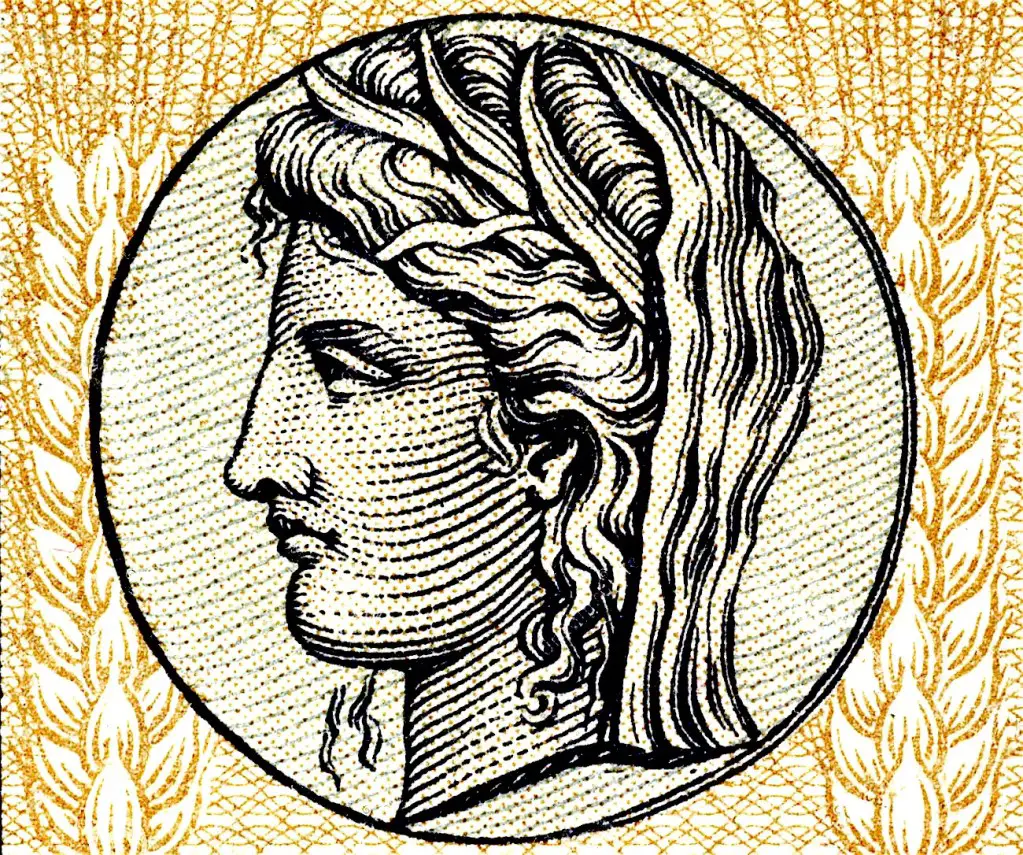
However, the cult of Isis, the Egyptian Ceres, it was very mysterious, and it remains so for us too. We only know that the goddess was solemnly celebrated every year in the city of Busiris, and that she was sacrificed an ox. Herodotus tells us: «After the sacrifice, men and women, several thousand, give each other great blows. What god are they fighting for, it would be, I believe, impiety to say. " The Greeks, like the Egyptians, maintained a absolute silence about the mysteries of the cult of Ceres and historians have learned nothing that can satisfy our curiosity. The revelation to the layman of the secret of these practices was punished with death. Listening to the disclosure was considered a crime of equal gravity. As with the Egyptian sanctuaries of Isis, so in the temples of Ceres it was strictly forbidden to enter all those who had not received initiation.
Yet, the information that has been handed down to us, on the hierarchy of the great priests, authorizes us to think that the mysteries of Ceres must have been of the same type as those of the Hermetic science. In fact we know that the ministers of the cult were divided into four degrees: it Hierophant, in charge of initiating newbies; the Torch holder, which represented the Sun; the Herald, which represented Mercury; the Minister of the Altar, which represented the Moon. In Rome the cereals they were celebrated on April 12 and lasted eight days. He was being carried in a procession egg, symbol of the world, and pigs were sacrificed to it.
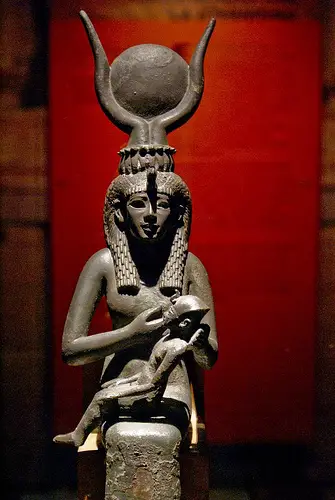
We mentioned earlier that Die, a statue representing Isis, was called the mother of the gods. The same epithet was reserved for Sale o Cybele. Thus the two divinities reveal themselves to be very close relatives, and we would rather be of the idea of considering them as different expressions of one and the same principle. Charles Vincens confirms this opinion with the description he gives of a bas-relief depicting Cybele, which, for centuries, has been seen outside the parish church of pennes (Bouches-du-Rhone), with his registration: Matri Deum.
"This strange fragment - Vincens tells us - disappeared only around 1610 but is reproduced in an engraving in Collection by Grosson ". Strange Hermetic Analogy: Cybele was worshiped in Pessinunte, Phrygia, in the form of a black stone said to have fallen from heaven. Phidias represents the goddess sitting on a throne between two lions, she has a mural crown on her head from which a veil descends. She is sometimes depicted holding a key and it appears that she is taking off her veil. Isis, Ceres, Cybele: three heads under the same veil.

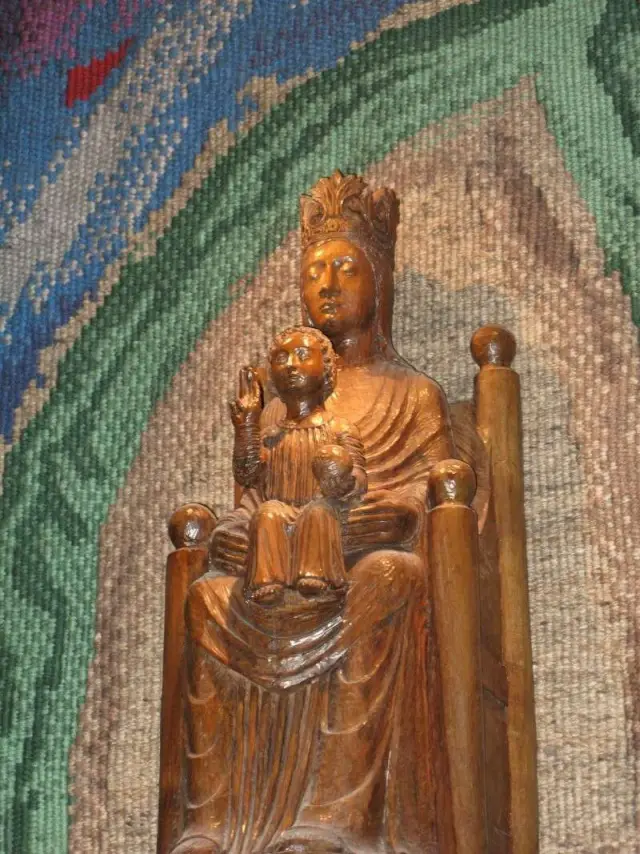
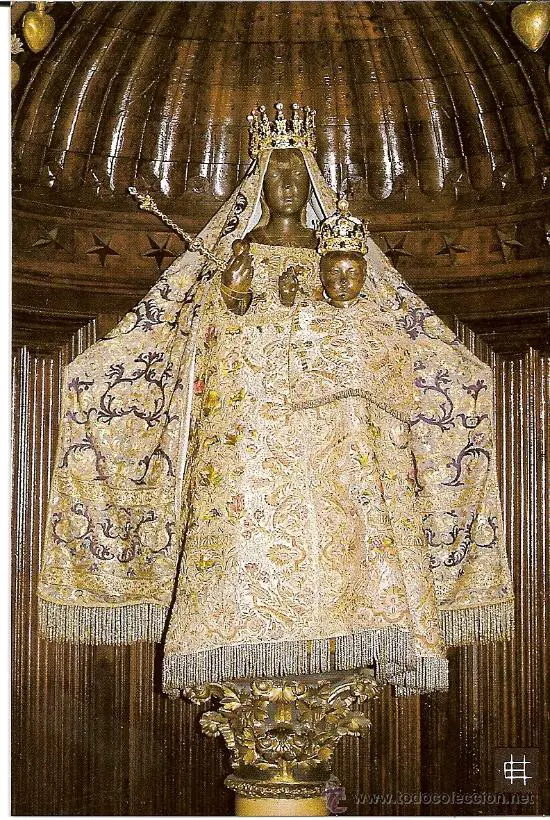


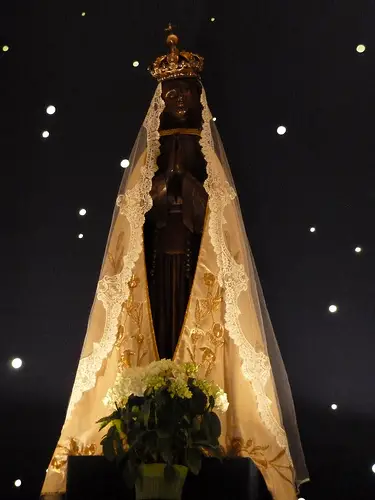

Fantastic article
Thanks for the useful information definitely delve into.
Thanks a lot Francesca